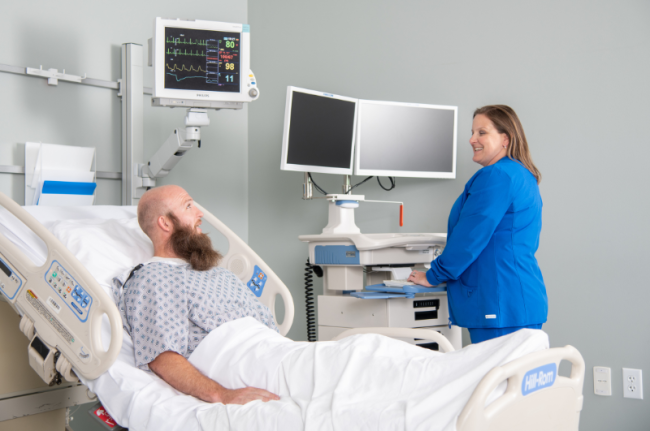Future-Proofing Healthcare: Patient Rooms Designed for Efficiency, Efficacy, and Wellbeing
Patient room design can play a significant role in improving both caregiver workflow and efficacy in several ways:
Efficiency:
-- Functional layout: Dividing the room into zones for staff, patient, and visitor areas can minimize unnecessary movement and clutter. Placing frequently used equipment near the entrance and arranging furniture for easy access to patients streamlines tasks.
-- Smart storage: Ample, organized storage for supplies and equipment reduces wasted time searching. Built-in cabinets and mobile or wall-mounted workstations can maximize space and accessibility.
-- Technology integration: Integrating medical devices with central monitoring systems allows remote observation and reduces the need for constant physical checks. Automated medication dispensing and electronic charting further save time and minimize errors.
Efficacy:
-- Improved visibility: Clear sightlines between the patient and staff zones enable quick assessments and intervention without entering the room. Glass panels in doors or strategically placed workstations can enhance visibility while respecting privacy.
-- Natural light and calming environment: Natural light and biophilic design elements like plants can reduce stress and improve healing, leading to better patient satisfaction and requiring less staff intervention.
-- Patient involvement: Accessible controls for lights, temperature, and entertainment allow patients to manage their comfort level and participate in their care, reducing dependence on staff and promoting recovery.
-- Family-friendly design: Designated spaces for family members to rest and support patients can foster a positive healing environment and reduce disruptions for staff.
Additional considerations:
-- Standardized design: Consistency in equipment and design across rooms reduces learning curves for new staff and minimizes confusion, especially during emergencies.
-- Infection control: Designing surfaces for easy cleaning and disinfection, including antimicrobial materials, touchless fixtures, and proper ventilation, helps prevent the spread of infections.
-- Flexibility: Adaptable furniture and modular room layouts allow for adjustments based on patient needs and acuity levels, reducing the need for transfers and disruptions.
By carefully considering these factors, hospitals can create patient rooms that optimize both caregiver workflow and patient satisfaction, leading to a more efficient and effective healthcare environment.




